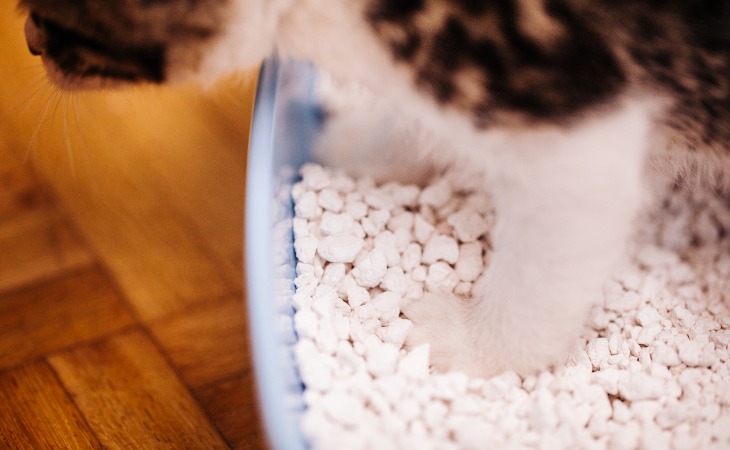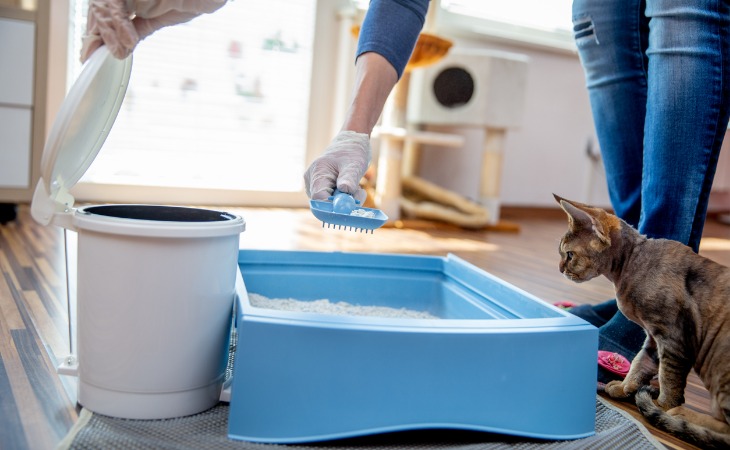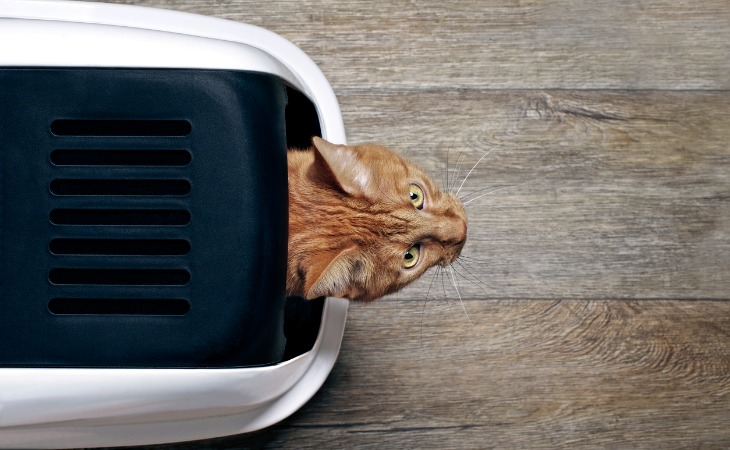If you have an indoor cat, litter is an essential purchase. However, choosing litter for your cat is not as easy as you might think. There are so many different types of litter! Each one has its own advantages and disadvantages. It’s important to learn about them in order to determine which litter is best suited to your cat’s comfort and your needs.
Choosing the right litter for your cat
You should take into account several criteria about different types of litter before making your decision. Some of these criteria include the absorption (both for liquid and for odors), whether the litter is clumping or non-clumping, and how often the litter box needs to be cleaned. The price of the litter should also be taken into account.
In this article, we will discuss different types of litter, clumping versus non-clumping litter, and scented versus unscented litter.

3 types of cat litter
The three different types of cat litter that we will talk about are clay litter, silica gel litter (or crystal litter), and natural litters.
Clay litter
Clay litters can be clumping and non-clumping. This type of litter has an excellent absorption capacity.
However, clay litter does have a few disadvantages. To begin with, it is heavy. It also generates dust that can irritate your cat’s sinuses and lungs. This is especially the case if the litter box is closed. This dust also sticks to your cat’s paw pads.
Unfortunately, clay litter is not biodegradable and does not mask the smell cat’s urine and feces. For this reason, clay litter should be cleaned twice a week. If you scoop the litter every day, it’s possible to wait a few weeks before cleaning the litter box thoroughly.
If you or your cat suffer from respiratory problems, mineral litter is probably not the best option for you.
Silica gel litter
Silica gel litter, also known as crystal litter, is made up of absorbant quartz sand. This type of litter absorbs urine and odors. Crystal litter is biodegradable and light. In addition, it does not stick to your cat’s paws.
Cat waste should be scooped every day. However, the litter box only needs a thorough cleaning every two weeks, or as soon as the crystales turn yellow.
Silica gel litter is unscented. It is not available as a clumping litter.
Natural cat litter
Natural cat litter is typically made out of wood pellets. These effectively absorb moisture. It is also possible to find litter made out of straw, walnut shells and paper.
As this type of litter is lighter than clay and silica gel litter, it produces little dust. However, some cats do not like using this type of litter.
Litter boxes filles with natural cat litter should be cleaned daily. It should be thoroughly cleaned every 4 to 5 days to prevent strong odors.
Clumping or non-clumping cat litter
A non-clumping litter is typically less expensive than clumping litter. However, it needs to be changed more often.
Clumping litter
When clumping litter comes into contact with urine, the litter starts to form a compact ball. This means that when it’s time to scoop your cat’s litter, you can scoop out the clumps and fill the box with a bit of fresh litter.
Clumping litter is the most hygienic solution. It should be scooped daily to keep the litter box clean. If you scoop out the clumps every day, you can cleancat’s litter box thorougly every 3 to 4 weeks.
This typically litter typically does not stick to your cat’s paws and absorbs bad odors.
Non-clumping litter
Unlike clumping litter, this litter does not form a compact ball. When you scoop out the litter, you remove the waste and stop the litter to aerate it.
Regarding hygiene, stirring up urine-soiled litter means keeping the litter box partially clean. When your cat does their business, they scratch the litter and the litter box, then walk all over your house.
Non-clumping litter requires daily maintenance and the litter box should be thoroughly cleaned every 3 to 4 days. However, this also depends on the brand of litter you are using. Each brand has a different absorption capacity.

Should I buy scented or unscented cat litter?
This depends on how sensitive your cat is. For instance, some cats do not tolerate any odor other than their own urine in the litter box.
Scented litter
Instinctively, cats do not like scented litter. This is especially the case when it is an artificial smell. Therefore, it’s best to choose a litter with a light and subtle scent. When scents are too strong, it confuses your cat’s sense of smell and makes it difficult for them to smell their own urine. It’s important for cats to be able to smell their own urine because they do this to mark their territory. Furthermore, the smell of your cat’s urine reassures and soothes them because it’s their own smell. If the scent is too strong, your cat may do their business outside of the litter box.
For this reason, it is generally recommended to purchase unscented litters instead. This prevents any incidents and allows your cat to feel more at ease.
Unscented litter
While unscented litter smells like urine to us, for our cats, unscented litter is a “healthy” litter. This smell is their identity. Thus, it is neither pleasant nor unpleasant to them. For this reason, when you throw out your cat’s litter and replace it with fresh litter, your cat goes straight back to it to mark it with their smell.
If you really want to keep your litter box smelling pleasant without bothering your cat, we have a tip for you. You can try putting a thin layer of baking soda at the bottom of the litter box.

